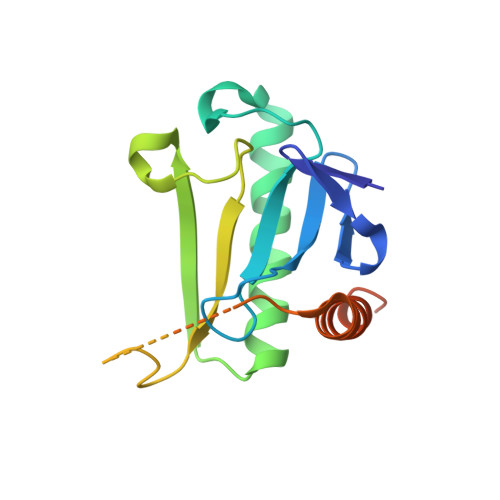Chemical Proteomics of the Tumor Suppressor Fhit Covalently Bound to the Cofactor Ap 3 A Elucidates Its Inhibitory Action on Translation.
Herzog, D., Jansen, J., Missun, M., Diederichs, K., Stengel, F., Marx, A.(2022) J Am Chem Soc 144: 8613-8623
- PubMed: 35522782
- DOI: https://doi.org/10.1021/jacs.2c00815
- Primary Citation of Related Structures:
7P8P - PubMed Abstract:
The tumor suppressor protein fragile histidine triad (Fhit) is known to be associated with genomic instability and apoptosis. The tumor-suppressive function of Fhit depends on the interaction with the alarmone diadenosine triphosphate (Ap 3 A), a noncanonical nucleotide whose concentration increases upon cellular stress. How the Fhit-Ap 3 A complex exerts its signaling function is unknown. Here, guided by a chemical proteomics approach employing a synthetic stable Fhit-Ap 3 A complex, we found that the Fhit-Ap 3 A complex, but not Fhit or Ap 3 A alone, impedes translation. Our findings provide a mechanistic model in which Fhit translocates from the nucleolus into the cytosol upon stress to form an Fhit-Ap 3 A complex. The Fhit-Ap 3 A complex impedes translation both in vitro and in vivo , resulting in reduced cell viability. Overall, our findings provide a mechanistic model by which the tumor suppressor Fhit collaborates with the alarmone Ap 3 A to regulate cellular proliferation.



















